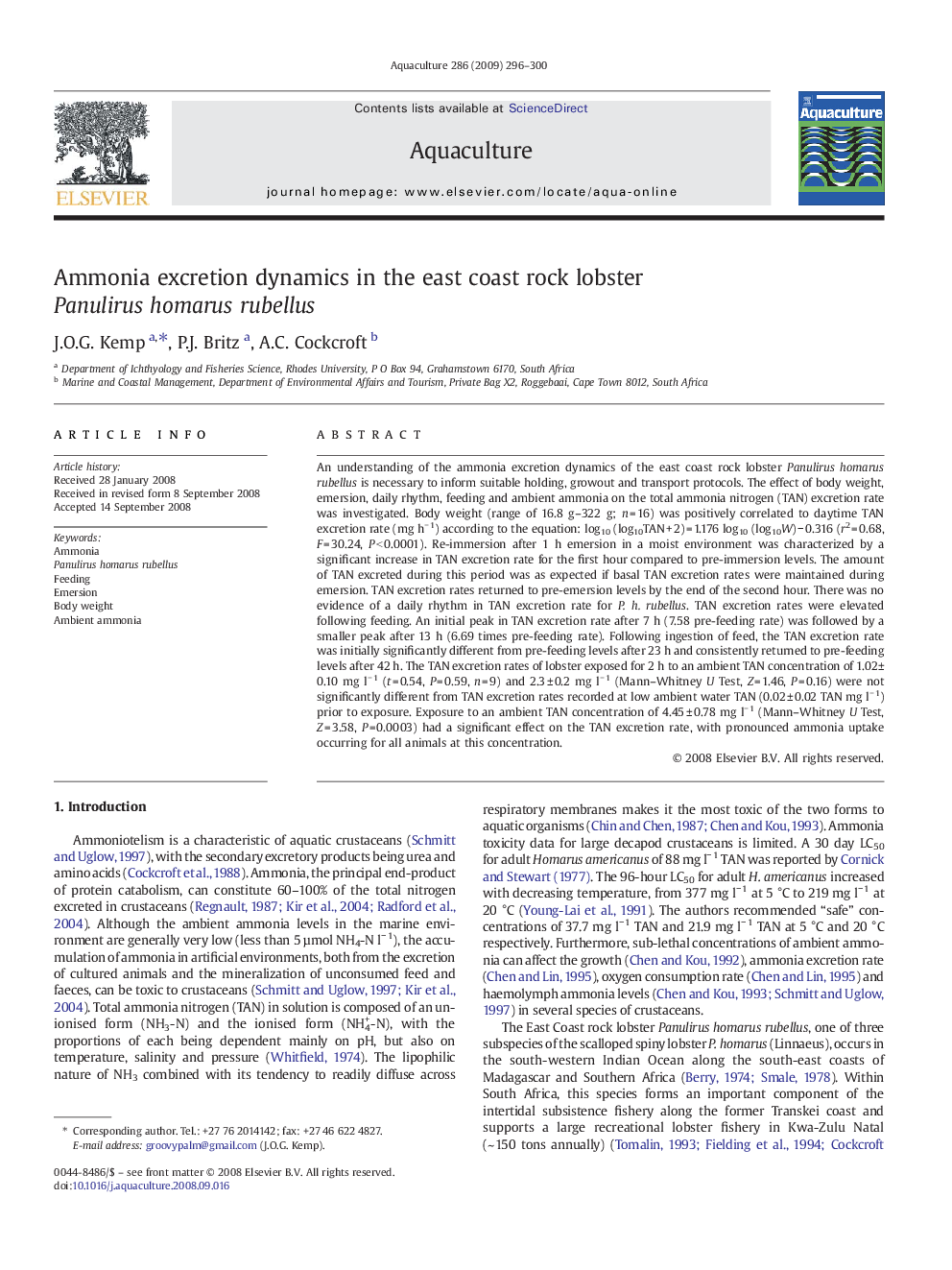| Article ID | Journal | Published Year | Pages | File Type |
|---|---|---|---|---|
| 2424206 | Aquaculture | 2009 | 5 Pages |
An understanding of the ammonia excretion dynamics of the east coast rock lobster Panulirus homarus rubellus is necessary to inform suitable holding, growout and transport protocols. The effect of body weight, emersion, daily rhythm, feeding and ambient ammonia on the total ammonia nitrogen (TAN) excretion rate was investigated. Body weight (range of 16.8 g–322 g; n = 16) was positively correlated to daytime TAN excretion rate (mg h− 1) according to the equation: log10 (log10TAN + 2) = 1.176 log10 (log10W) − 0.316 (r2 = 0.68, F = 30.24, P < 0.0001). Re-immersion after 1 h emersion in a moist environment was characterized by a significant increase in TAN excretion rate for the first hour compared to pre-immersion levels. The amount of TAN excreted during this period was as expected if basal TAN excretion rates were maintained during emersion. TAN excretion rates returned to pre-emersion levels by the end of the second hour. There was no evidence of a daily rhythm in TAN excretion rate for P. h. rubellus. TAN excretion rates were elevated following feeding. An initial peak in TAN excretion rate after 7 h (7.58 pre-feeding rate) was followed by a smaller peak after 13 h (6.69 times pre-feeding rate). Following ingestion of feed, the TAN excretion rate was initially significantly different from pre-feeding levels after 23 h and consistently returned to pre-feeding levels after 42 h. The TAN excretion rates of lobster exposed for 2 h to an ambient TAN concentration of 1.02±0.10 mg l− 1 (t = 0.54, P = 0.59, n = 9) and 2.3 ± 0.2 mg l− 1 (Mann–Whitney U Test, Z = 1.46, P = 0.16) were not significantly different from TAN excretion rates recorded at low ambient water TAN (0.02 ± 0.02 TAN mg l− 1) prior to exposure. Exposure to an ambient TAN concentration of 4.45 ± 0.78 mg l− 1 (Mann–Whitney U Test, Z = 3.58, P = 0.0003) had a significant effect on the TAN excretion rate, with pronounced ammonia uptake occurring for all animals at this concentration.
